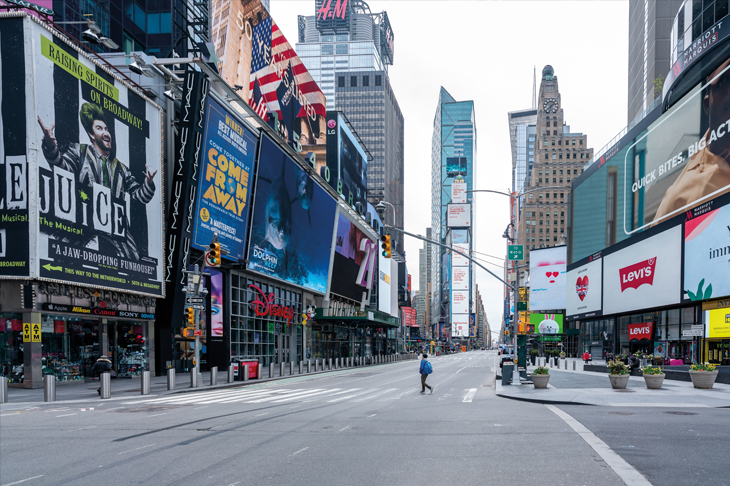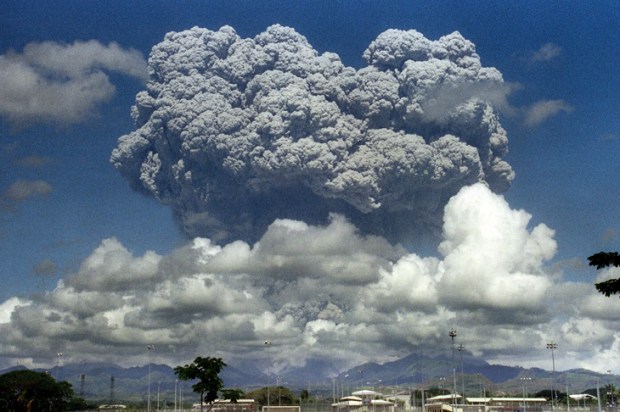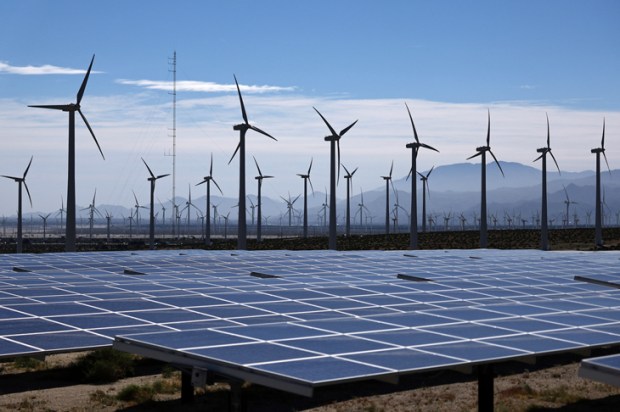One good result of the reaction to Covid-19 killing the global economy, at least as far as the Greens are concerned, is that the shutdown means markedly fewer emissions and that means climate doomsday will be postponed. Or will it?
Both concentrations of carbon dioxide in the atmosphere and total carbon emissions are tracked and that data published along with handy graphs, but claims of any link between changes in industry activity and changes in CO2 concentrations are hard to find. Greenhouse gas levels tracked by the Mauna Loa Laboratory in Hawaii, operated by the US National Oceanic and Atmospheric Administration, show a steady but hardly alarming acceleration in the annual rate of increase in CO2 concentrations in the atmosphere for whatever reason. In the 1960s, the average annual rate of increase was a touch under one part per million. In the noughties it was about 2 ppm, and a little higher in the decade just gone, with considerable variation in all years. For the year to March concentrations increased 3.3 ppm (to around 416 ppm).
For activists those figures are alarming – never mind that they are well below most projections and still don’t add up to the supposedly catastrophic doubling of existing CO2 concentrations until well into the next century, assuming existing trends continue. Forget the virus crisis, they say, the climate catastrophe is at hand. Something has to be done.
Graphs on the Mauna Loa site show that the average rate of increase of CO2 slipped slightly in the 1990s instead of growing steadily, with one possible culprit for this change being the collapse of the Soviet Bloc and subsequent implosion of its highly-polluting, wasteful industries.
However, all subsequent events including the painful global financial crisis, the adoption of the Paris agreement and a lot of screaming and shouting over climate, do not seem to have made any discernible differences to increases in CO2 concentrations in the air, at least to the layman’s eye. Those in the scientific community who might provide more insight, have been surprisingly quiet on this point.
By shutting down most of global industry for months the coronavirus crisis might at least provide a handy indication of just how much effort might be required to put a real dent in CO2 concentrations – that is, if industrial emissions are the problem in the first place.
Try as they might, activists (including activist scientists) cannot quite silence difficult sceptics who point out that industrial emissions are miniscule compared to natural flows of CO2 – between oceans and atmosphere, atmosphere and vegetation and so on – and direct measurements indicate that individual molecules of CO2 hang around in the atmosphere for maybe eight years. All that does not add up to human activities being able to have any effect on CO2 concentrations and that the main driving factor in the recent increase in those concentrations would be the warming oceans. (Think of carbonated water. Warmer water holds less CO2.)
Global warming theory has a way around those and other inconvenient facts. Although the resulting theory seems extraordinarily convoluted to any layman, to even mention the above points draws indignant responses from academics who say that the theory has been confirmed by multiple lines of research.
All that said, there is something to be gained from carefully comparing CO2 levels with the undoubted major, worldwide economic shutdown. Residents of the northern Indian state of Punjab, for example, report that they can now see the Himalayan mountains thanks to a cut in air pollution. Once-choked road connections to New York have suddenly become nearly deserted.
Whatever the result of that comparison, however, it may do no more than illustrate the immense cost of making any appreciable difference to CO2 levels. There would be very little support for major shut downs of industry for extended periods, once the virus crisis has passed and there are few ways to reduce emissions on the scale required to make any difference.
Renewable energy has proved difficult to use on grids that must operate 24/7. Late last year, Energy Security Board chairman Kerry Schott described the state of the Australian grids, with existing levels of renewables, as ‘anarchy’. In any case, building enough capacity to make a difference would require more investment than any democratically-elected government, or its voters, would be willing to pay. In January, the Australian Financial Review reported an estimate by Australian expatriate green entrepreneur Saul Griffith that decarbonising the Australian economy would cost $5 trillion over 20 years.
As a first point in any campaign to make any government and its voters fork over that amount of money, the decarbonising industry should at least explain just what exactly is supposed to occur if emissions continue and the world warms by one and a half degrees or by two degrees which, activists have repeatedly declared, would be a bad thing indeed.
The two degrees commentators often speak of means two degrees from pre-industrial times, which should be one degree from now, but like everything else involving green evangelicalism commentators seem to forget what their own slogans are supposed to mean.
If challenged on the matter they may claim that the one-to-two degree limit is ‘certain, settled science’, without realising that the supposed consensus is only about increasing emissions causing warming. There is no real evidence beyond assertions by activists that any set temperature increase will result in a specific, bad outcome.
Various attempts to estimate likely damage from changes in climate have yielded wildly different results. In 2006, the Stern report produced by distinguished British economist Nicholas Stern found an economic case for limiting emissions but that was 14 years ago and only after making various assumptions which were strongly attacked. The latest IPCC report, issued in 2014, notes that future damage estimates due to climate change in different studies can vary by two orders of magnitude, again depending on the assumptions made.
When Covid-19 was first reported a mere few months ago, no one could have foreseen the immense economic damage that would result from government efforts to contain the virus, or the deaths that occurred when strong action was not taken. Forecasting the costs and effects of global warming is an exercise in futility, but at least the industry shut-down due to the virus will give us some idea of the costs involved in fighting climate change.
Got something to add? Join the discussion and comment below.
Get 10 issues for just $10
Subscribe to The Spectator Australia today for the next 10 magazine issues, plus full online access, for just $10.
Mark Lawson: www.clearvadersname.com
You might disagree with half of it, but you’ll enjoy reading all of it. Try your first month for free, then just $2 a week for the remainder of your first year.














Comments
Don't miss out
Join the conversation with other Spectator Australia readers. Subscribe to leave a comment.
SUBSCRIBEAlready a subscriber? Log in